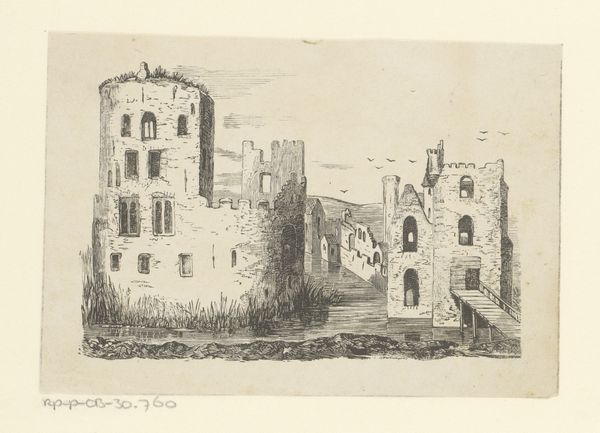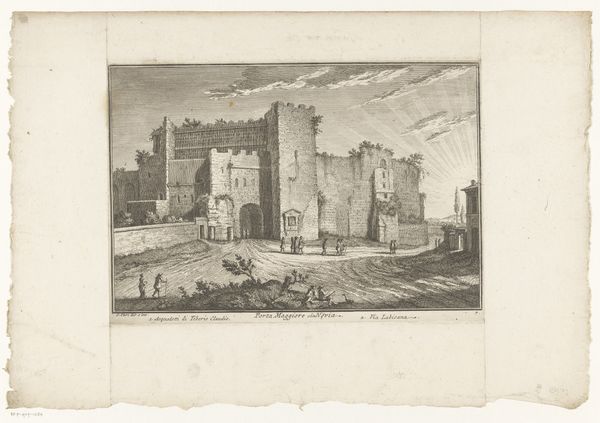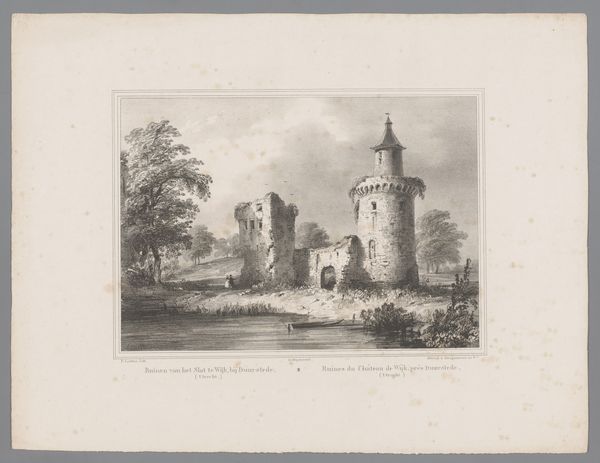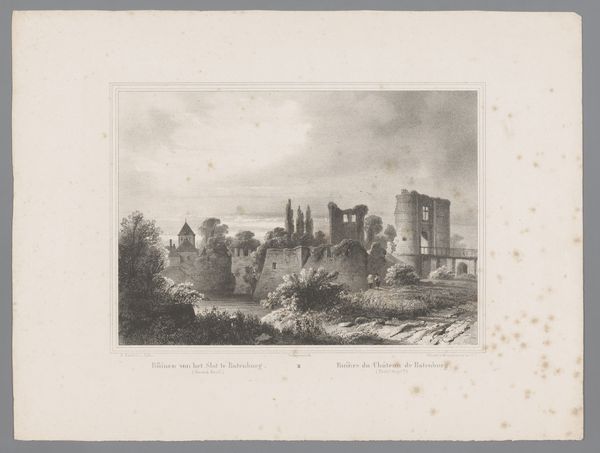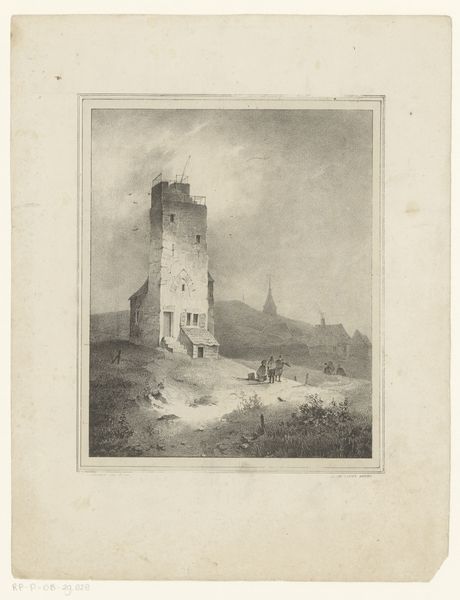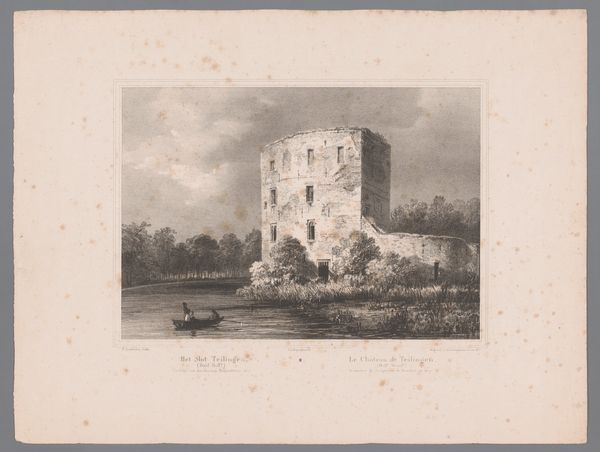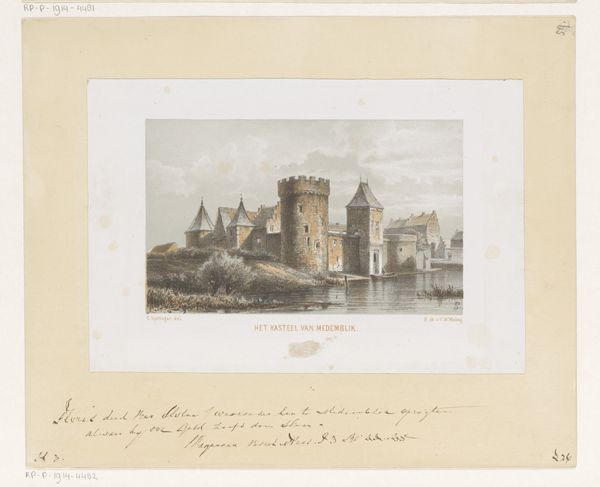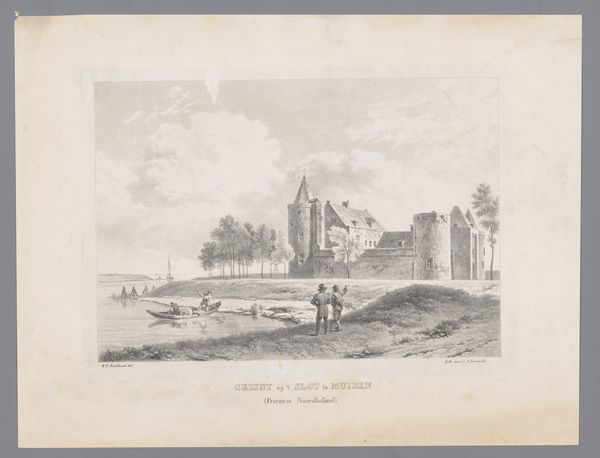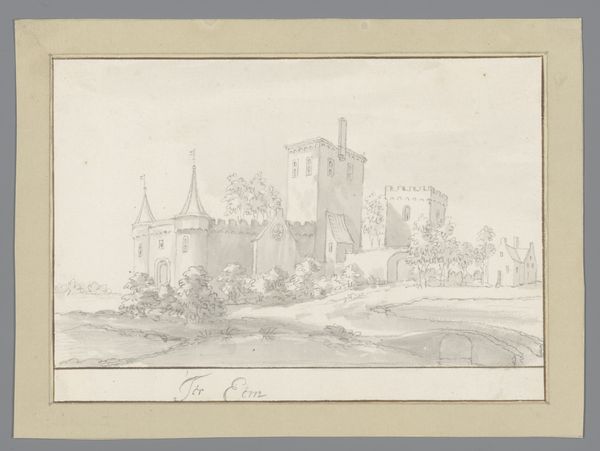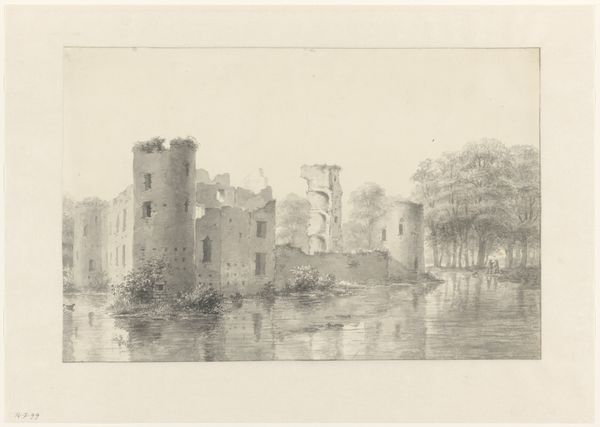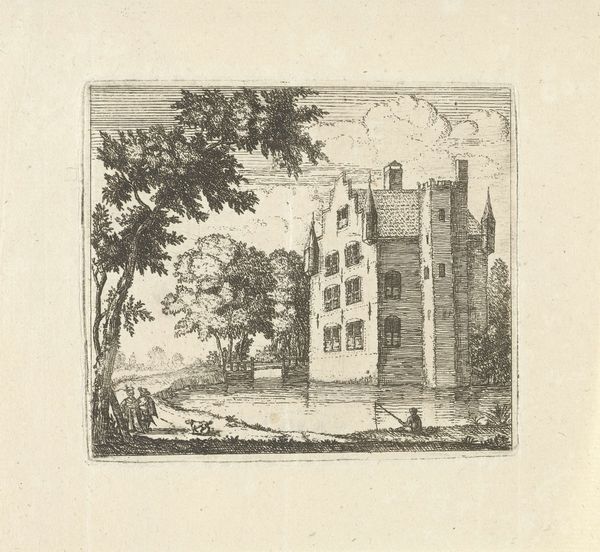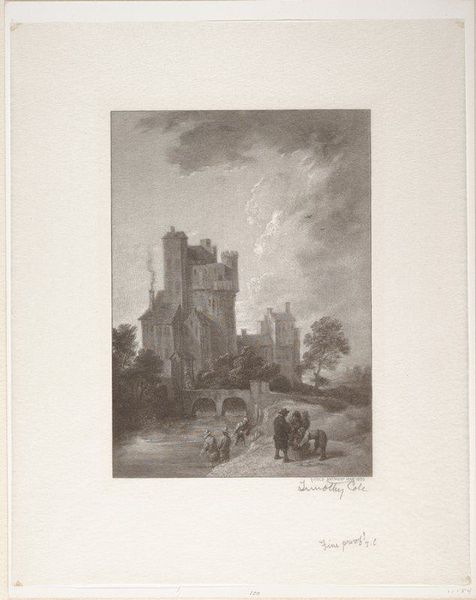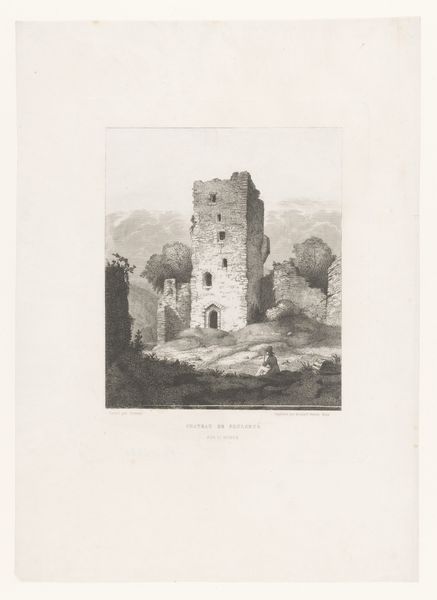
Dimensions: height 227 mm, width 270 mm
Copyright: Rijks Museum: Open Domain
Curator: This is Carel Christiaan Antony Last's "Stadsgezicht met ruïne van een toren," or "Cityscape with a Tower Ruin," an engraving from approximately 1847 to 1863. The work is currently held in the Rijksmuseum collection. Editor: My initial reaction is one of quiet melancholy. The monochrome tones emphasize the decaying architecture. There's a certain stillness to the scene that feels… heavy. Curator: Indeed. The print uses fine lines and delicate shading to build tonal complexity within the grayscale. Note how the artist uses contrast—bright areas to define architectural form against a shadowy, atmospheric sky. It creates a compelling balance. Editor: And that atmospheric sky feels critical. The ruin, coupled with the almost brooding sky, makes me think about broader themes of decline—perhaps the fallibility of human endeavor in the face of nature's slow reclamation? The few figures included seem small, almost insignificant, in contrast to the tower's crumbling monumentality. What's particularly interesting is placing the work within the political landscape of the mid-19th century: what statements might Last have wanted to suggest in representing urban decay and the power of change? Curator: These prints provided affordable access to landscapes, fulfilling the demand in a growing market of collectors. Consider the structure of the composition itself. The tower dominates, certainly, yet it is the precisely rendered details—the subtle changes of texture, the meticulous construction of lines—that shape our reading. These qualities make this far more than a simple topographical record; Last's skilled control creates a specific mood, a deliberate sentiment. Editor: Yes, but a deliberate sentiment connected, surely, to its contemporary viewer's anxieties and understanding of place, power and memory? A ruin functions, culturally, as both a memento mori and a claim to earlier authority—it operates powerfully as symbol within specific cultural frameworks. Last's delicate use of realism shouldn't distract from the socio-political messages that emerge when we historicize it! Curator: A compelling reading! Editor: And a vital consideration for today’s audience as we continue to navigate and critique ideas about history and legacy.
Comments
No comments
Be the first to comment and join the conversation on the ultimate creative platform.
